Automating Treasure Table Rolls
One of the first things I automated via a program was determining results on the treasure table.
There is a fair about of rolling to determine treasure. There is also several sub-tables that you could possibly have to roll on, multiple times.
Here is an excerpt of the treasure table from Hyperborea

Let's use Treasure Class A as an example. This is probably the most rolling you have to do. Determining coin results are easy. Things get more tedious if there are sub-tables. Gems, Jewelry, and Magic have plenty of sub-tables to handle.
Here is the gems table.
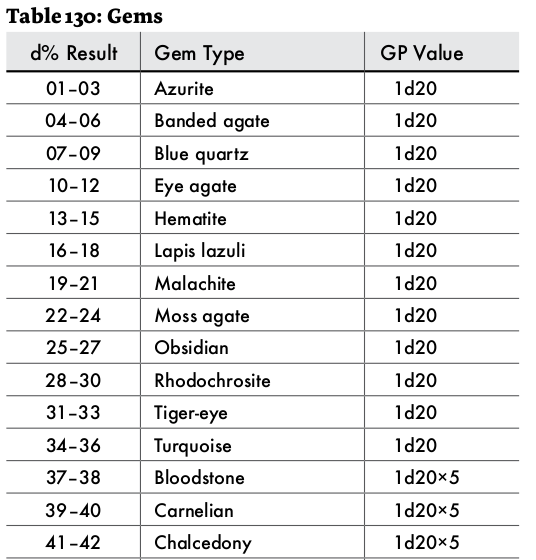
You can even do more rolling if you get the correct result.
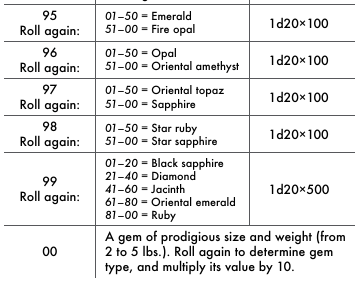
Jewellery has at least 2 sub-tables to roll on. The kind of jewellery.
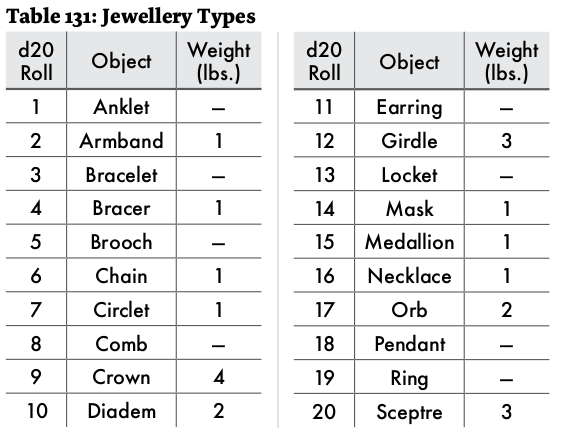
And what it is made of and it's worth.
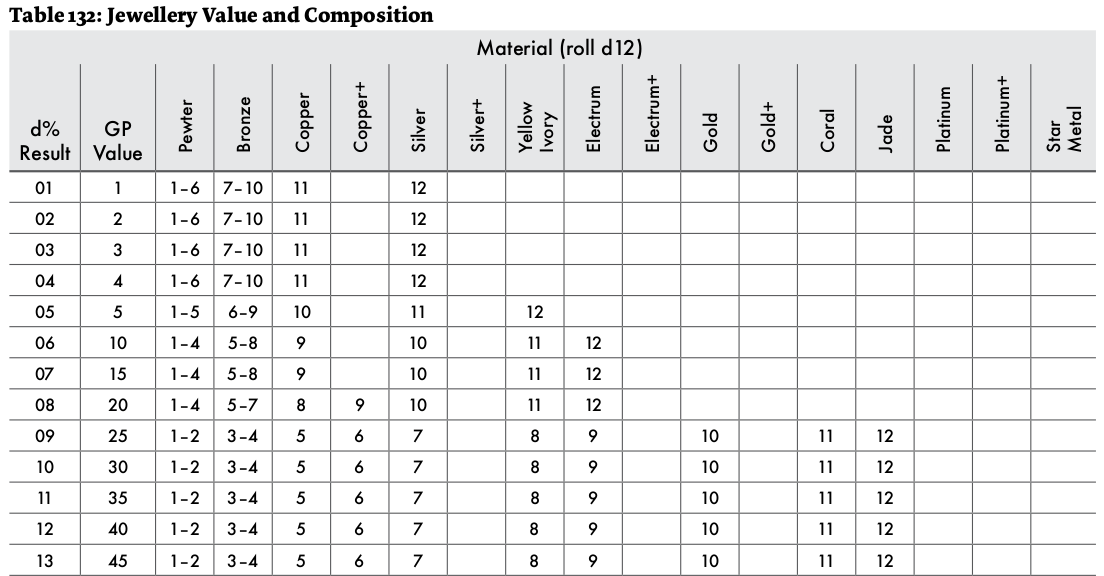
This is just the beginning for magic items. A veritable rabbit hole to go down.
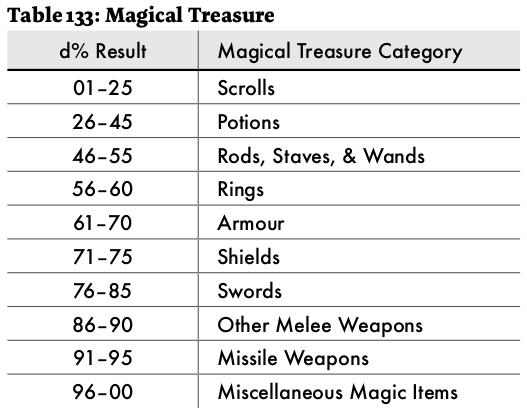
It can end after a couple tables.
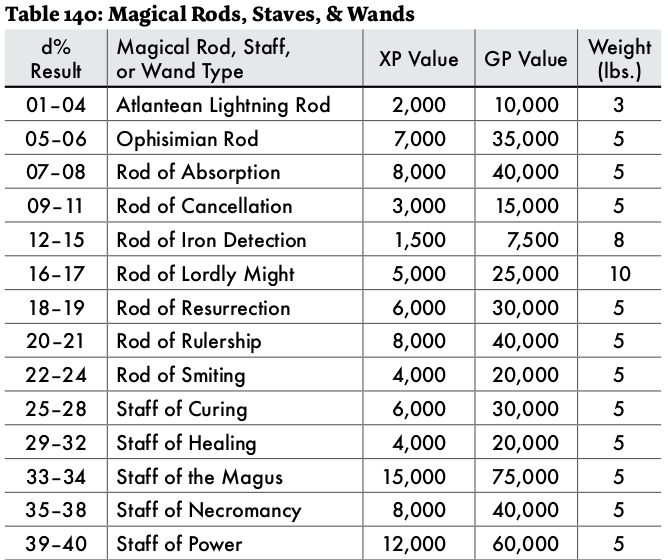
Eventually you get to the far end of that tree and have to come back for more rolls as needed.
Thankfully, the DM for a game I was in, and Perl Pumpking for some time, also seemed to have a thing to automate tables.
There are lots of tables that can be referenced by a DM. So Rik Signes created Roland to help with automating the rolling on them
https://rjbs.manxome.org/rubric/entry/2013
Go ahead, give it a read. Rik does a good job explaining Roland. This post will be here waiting for you when you are done.
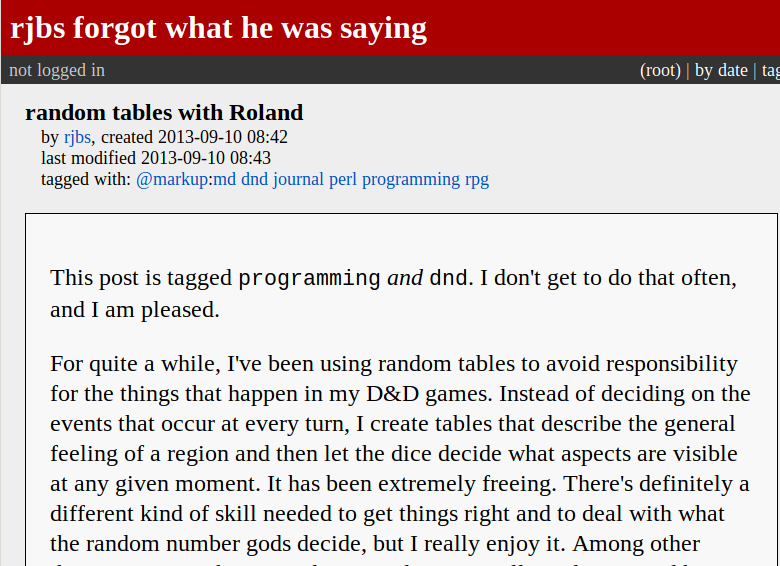
It's not available on CPAN just yet, but I'm working on him. He's says it's bad software but I think it works just fine.
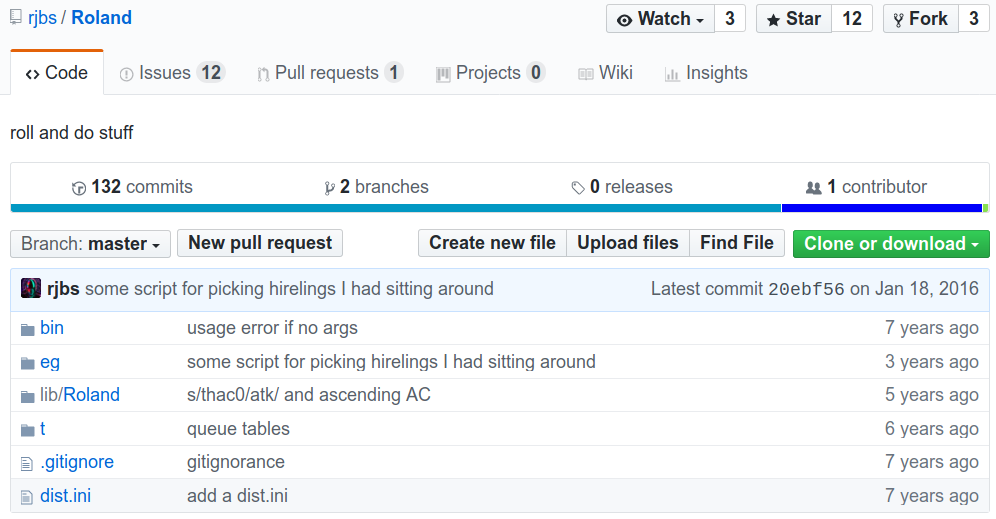
Thankfully Roland can make all that rolling and referencing automated. That is assuming you are comfortable with the level of entropy and randomness a pseudo random number generator can give you
Really, go read Rik's blog post and then come back here when you are done.
Here is an example of the output of the program I created.
$ ./roll_treasure a
3500 cp
8000 gp
50 pp
10,000 gp piece of jewelry
5,000 gp piece of jewelry
100 gp piece of jewelry
750 gp piece of jewelry
1,000 gp piece of jewelry
200 gp piece of jewelry
100 gp piece of jewelry
100 gp piece of jewelry
200 gp piece of jewelry
100 gp piece of jewelry
500 gp piece of jewelry
200 gp piece of jewelry
200 gp piece of jewelry
200 gp piece of jewelry
Staff of Withering
Potion of Delusion (cursed)
Quarterstaff +2
The program itself, when stripped down, is really quite simple.
my @rolls = @ARGV;
for my $roll ( @rolls ) {
$roll =~ s/,| +|[()]//g;
$roll = lcfirst $roll;
my $count = 1;
if ( $roll =~ m/\wx\w/ ) {
($roll, $count) = split('x', $roll);
}
my $path;
my $roll_length = length($roll);
if ( 1 == $roll_length ) {
$path = qq(treasure/class_$roll);
}
else {
$path = qq(treasure/$roll);
}
for (1 .. $count ) {
my $result = qx(~/bin/roland $path);
say $result;
}
}
There is however data entry that must be done.
Each Treasure Class needs a table.
# treasure/class_a
- { file: treasure/a/cp }
- { file: treasure/a/sp }
- { file: treasure/a/ep }
- { file: treasure/a/gp }
- { file: treasure/a/pp }
- { file: treasure/a/gems }
- { file: treasure/a/jewelry }
- { file: treasure/a/magic }
Then each file
# treasure/a/cp
dice: 1d100
results:
1-25:
dice: 2d6
results:
2: 1000 cp
3: 1500 cp
4: 2000 cp
5: 2500 cp
6: 3000 cp
7: 3500 cp
8: 4000 cp
9: 4500 cp
10: 5000 cp
11: 5500 cp
12: 6000 cp
26-100: ~
Snippet of the gems table.
93-94: "Violet garnet, [[1d20x50]]gp"
95:
dice: 1d100
results:
1-50: "Emerald, [[1d20x100]]gp"
51-100: "Fire opal, [[1d20x100]]gp"
96:
dice: 1d100
results:
1-50: "Opal, [[1d20x100]]gp"
51-100: "Oriental amethyst, [[1d20x100]]gp"
97:
dice: 1d100
results:
1-50: "Oriental topaz, [[1d20x100]]gp"
51-100: "Sapphire, [[1d20x100]]gp"
98:
dice: 1d100
results:
1-50: "Star ruby, [[1d20x100]]gp"
51-100: "Star sapphire, [[1d20x100]]gp"
Here is the jewelry table
# treasury/jewelry
- { file: treasure/jewelry_type }
- { file: treasure/jewelry_value }
Jewelry type table snippet
# treasury/jewelry_type
dice: 1d20
results:
1: anklet, no weight
2: armband, 1 lb
3: bracelet, no weight
4: bracer, 1 lb
5: broach, no weight
6: chain, 1 lb
7: circlet, no weight
8: comb, no weight
9: crown, 4 lb
Jewelry value table snippet
# treasury/jewelry
dice: 1d100
results:
1:
dice: 1d12
results:
1-6:
- " made of pewter, worth 1gp"
7-10:
- " made of bronze, worth 1gp"
11:
- " made of copper, worth 1gp"
12:
- " made of silver, worth 1gp"
What the application runs like on the command line.
$ ./roll_treasure gems
Carnelian, 90gp
$ ./roll_treasure jewelry
crown, 4 lb
made of electrum, worth 1,000gp
$ ./roll_treasure jewelry
armband, 1 lb
made of bronze, worth 3gp
$ ./roll_treasure jewelry
mask, 1 lb
made of copper set with gems, worth 400gp
Deep blue spinel, 700gp
And that is basically it.